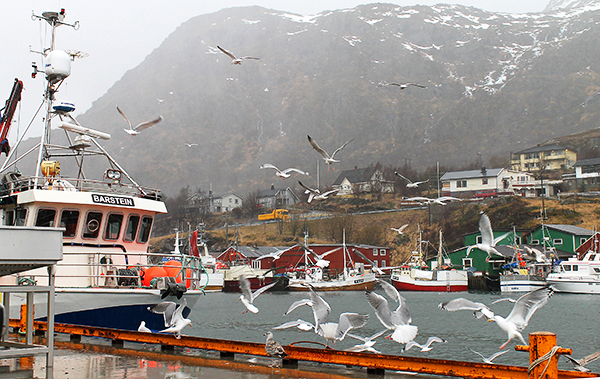What happened?
On board a fishing vessel, there are many potential sources of fire. Some causes of fire are typical repeat offenders, but fire may also arise from more unexpected causes. We recently received a report regarding a smaller fire on a fishing vessel resulting from an explosion in the cabin. The roof hatch in the cabin had blown open, and the crew could see tongues of flame coming from the opening. Fortunately, there were no people in the cabin, and the incident did not cause any personal injury. The cause turned out to be that the gas canister for a sounding horn (purchased from a car equipment supplier) exploded after rolling down onto the heater in the cabin. The safety data sheet for the products states that the pressure vessel must be protected against sunlight and that it must not be exposed to temperatures exceeding 50 °C. The canister must be kept in a dry and cool place and should only be used in well-ventilated places.
We assume that this a special incident, and that such signalling horns do not form part of the regular equipment on most fishing vessels. Nevertheless, it is a reminder to consider all potential sources of fire on board, and to keep this in mind when checking the vessel. Even if the vessel does not carry a signalling horn, other gas canisters or chemicals on board could be flammable and require additional precautions.
Risk of major accidents
During the peak season, fishing vessels lie fender to fender in the fishery ports. A fire on board a vessel may quickly escalate into a catastrophe if it spreads to nearby vessels. We know how fast a fire can increase, and some vessels are made of extremely flammable materials, and a fire may turn into a flashover in the course of minutes. This is why it is essential that the company assumes responsibility for having fire prevention on board.
Causes
Heaters have in many cases been the cause of fire as a result of being covered or overheated. Quite often, oil-filled heaters and other heaters are used to dry clothes, which is a significant fire risk. Apart from this, the machinery space is the place on board where a fire is most likely to start. Fire-related incidents such as overheating in a turbo, auxiliary engine or defective fans have happened.
Electrical installations are also frequent causes of fire due to short circuits in electrical cables or defects in other electrical equipment.
Lessons learned
It is important that the shipping company pays particular attention to routine maintenance and fire prevention. In addition to routine maintenance, the vessel should be checked visually for potential sources of fire.
The machinery space shall be kept free from oil spillage and oily rags. Oily rags must be kept in a separate container.
Loose equipment that may pose a fire risk must be properly stowed. Electrical cables and components must not be visibly damaged, the fire insulation must be intact, and attachments on oil-carrying pipes must not show any wear and tear, etc.
Any retrofitting of electrical equipment must be carried out by electrically skilled personnel. Electrical equipment must also be checked at places that are difficult to reach, e.g. under the desk on the bridge. This is a fire risk area. Avoid using extension leads with multiple sockets. Try to remember that a build-up of dust may contribute to generate heat, thus increasing the fire risk.
Make sure that the fire-fighting equipment has been checked and is readily available. Also, be sure to have an emergency preparedness plan in place in case of fire on board.
References to relevant regulations:
- Regulations relating to maritime electrical installations (e.g. chapter 5)
- Safety regulations related to the maintenance and operation of electrical installations
- Regulations on the construction, operation, equipment and surveys of fishing vessels of 15 m in overall length (LOA) and upwards
- Regulations on welding, welding equipment, hot work and storage of gas cylinders on board ship
- Regulations on fishing vessels of less than 15 metres in overall length
- Regulations on safety precautions for gasfired installations, etc. operating on propane or other liquefied hydrocarbon gases used on board vessels

